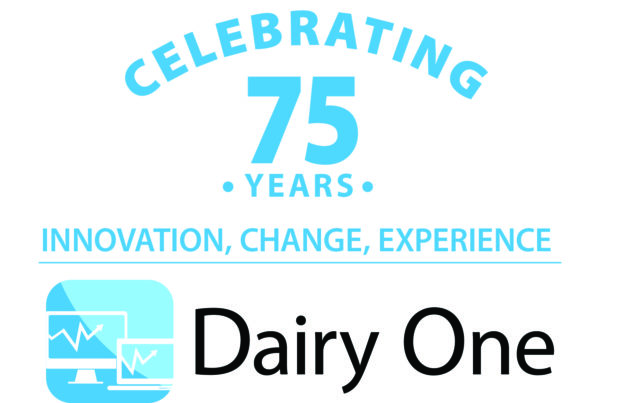Milk production on a global scale had a definite impact on U.S. milk prices the past few years. Looking forward, it will be domestic production that will have the largest influence on prices in 2010.
The U.S. and the European community are the largest pockets of milk in the world, stated Mary Keough Ledman of Keough Ledman Associates, Inc., as she reviewed which countries are global leaders at an industry meeting in December. India is the biggest producer if you count buffalo milk. New Zealand is not growing production, but China is a major growth area in the world. China has more cows than the U.S., however it only gets one-third of the milk out of them. At the Vita Plus Dairy Summit in Green Bay, Wisconsin, December 2, Ledman said, “Working in markets since 1980, I’ve found it’s an act of God when milk prices go up, but when they come down someone’s manipulated them. It’s not your God-given right to have $20 milk, and there’s a reason for that.” A whirlwind of items impacted the prices in 2007. World milk production fell, partly due to the weather in New Zealand. World oil prices jumped from $20 a barrel in 1998 to $130 a barrel. The purchasing power of those oil-rich countries increased, and they fed their people better, mainly with dairy products, leading to an increase in demand. The U.S. was in position to respond then, but by 2009 everyone else in the world was also in position ... and our prices fell. In the second half of 2009, U.S. production is lackluster. New Zealand is having weather problems again and also has lower production. Europe is still under quota and cannot increase production. If this low milk production on a global scale leads to a significant spike in prices, the U.S. will be able to respond due to its ample supply of bred heifers, Ledman predicted. “The U.S. has been using sexed semen. We culled a lot of cows this year, so we have the stall space for another 200,000 head. We’ll change our culling and respond to higher milk prices,” she said. Ledman only predicted limited growth in 2009 and 2010, unless there is a significant increase in cheese prices.
U.S. dairy product exports are expected to increase in 2010, due to the weak U.S. dollar. That weak dollar may also curb dairy imports into the U.S. However, the domestic market is not in place to support $4 per gallon milk again.
“We’re better off trading between $13.50 and $16.50 because I don’t think domestic demand will handle over $16.50,” Ledman said.

U.S. milk production in 2010 will only be plus or minus 0.25 percent compared to this year. Milk per cow will increase and there will be a slight increase in cow numbers from people just not culling as much. (See Figure 1.)
Recent production numbers in the U.S. show a decline in the West, mostly driven by a reduction of cow numbers.
“California was building the industry on a paradigm that’s changed. In 2005, their cheap energy and feed went away,” she said.
The Northeast is also declining in milk production; however, it’s not an area typically known for growth because of the high cost of doing business there. In the long-term picture, the Midwest will be asked to fill production gaps in the Northeast and Mid-Atlantic regions.
“This is the first year I can say milk production is growing in the Midwest while in the West it is declining,” declared Ledman, a native Midwest farm girl. “This has been an evolution. It has not happened overnight.”
Ledman attributed the growth to more milk per cow achieved by greater education and the work of producer peer groups in the Midwest. She also said there may be a Mother Nature factor this year with moderate temperatures that didn’t slow production in the summer.

When looking at dairy slaughter, the U.S. started the year off up 25 percent from 2008. It’s important to consider where the cows are going and where they are coming from, she said. In 2005 and 2006 the West surpassed the Midwest in the number of cows slaughtered. (See Figure 2.) That is when the feed and energy prices changed and continued to lead to more culling in 2007 and 2008, even when milk prices were strong. “Going into 2009, they were not in a position of strength,” Ledman said.
Another barometer of the health of the dairy industry is the milk-feed price ratio. The November price ratio was 2.19, based upon an all-milk price of $15, corn at $3.64 a bushel, soybeans at $9.48 a bushel and alfalfa at $110 per ton. A ratio above 3.0 is known to drive expansion.
The USDA is now looking at 2010 all-milk price of $16.50, driven by commercial disappearance, the consumer price index and export markets.
Commercial disappearance for July through September was up 2.1 percent versus the prior year. Butter inventories were very large in September, and Ledman recommended buying butter now because it won’t be as cheap come Easter. There has also been a major slowdown in cheese sales.
The consumer price indexes for fluid milk and butter have gone down. “This has been a good year for consumers to put dairy products in their carts,” she said.
Yet it isn’t because we have 200,000 fewer cows or that U.S. consumers can purchase cheap dairy products that is leading the market recovery today. It’s because the Oceania market is calling for more non-fat dry milk, Ledman said. Driving the non-fat price is the price for whole milk powder that is being consumed by China and Indonesia. The U.S. doesn’t produce whole milk powder, but New Zealand does, and when it does it can’t produce enough non-fat dry milk. Therefore, the U.S. steps in and our price goes up.
Cheese is not a big export item for the U.S., but 40 to 50 percent of the whey byproduct of cheese production is exported. It was positioned to finish this year at higher export amounts than 2008.
“Dairy ingredient exports are a positive for the dairy industry,” Ledman said.
Butter exports have also ticked up recently, but are insignificant in the whole scheme of things.
Production of American cheese has increased, which is impressive considering no company has built a new plant. Mozzarella is also on the upswing now that pizza manufacturers are back to using higher-quality ingredients.
There was a large drop in skim milk powder production, and Ledman reminded the audience that half the production there is being sold to the U.S. government, so there is no drive to produce more.
When Ledman began to forecast for 2010 she had an all-milk price of $15 per hundredweight for January, but dropping back to $13 in March. “Producers in the West will see a profit for the first time in a long time in December and January and will increase supply. When I look at the supply response in tandem with a decrease in demand, that’s when I have this market coming down,” she said.
“I could be very wrong, but if you can lock in something in the first part of the year above $15, I would lock in some of that,” Ledman said. “This is a very fragile demand. I wouldn’t roll the dice when you have positive margin on the table.”
She predicted the second part of the year to be very dicey. With Mother Nature more favorable this summer, more cows were bred in the cooler temperatures. When those cows calve there will be an impact on the market, she said. PD

-
Karen Lee
- Editor
- Email Karen Lee




